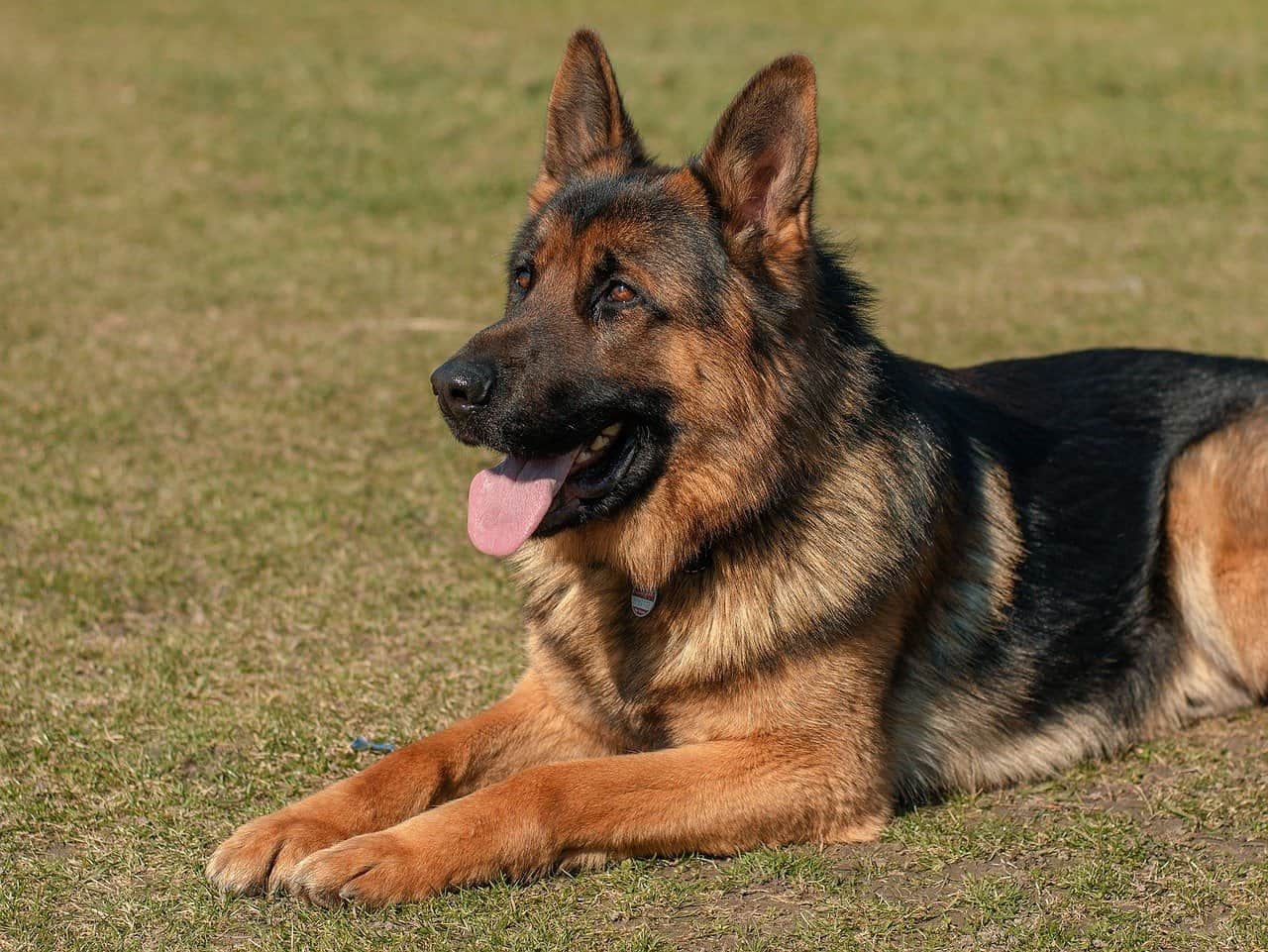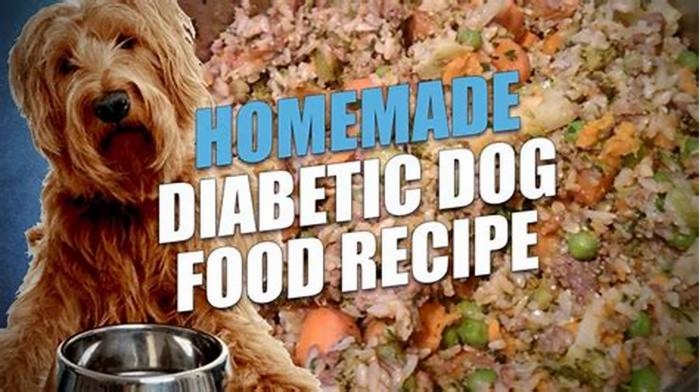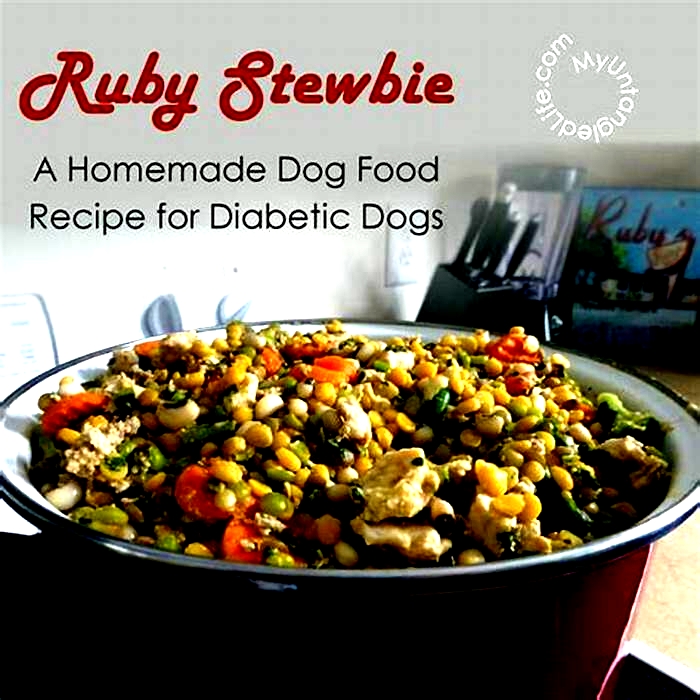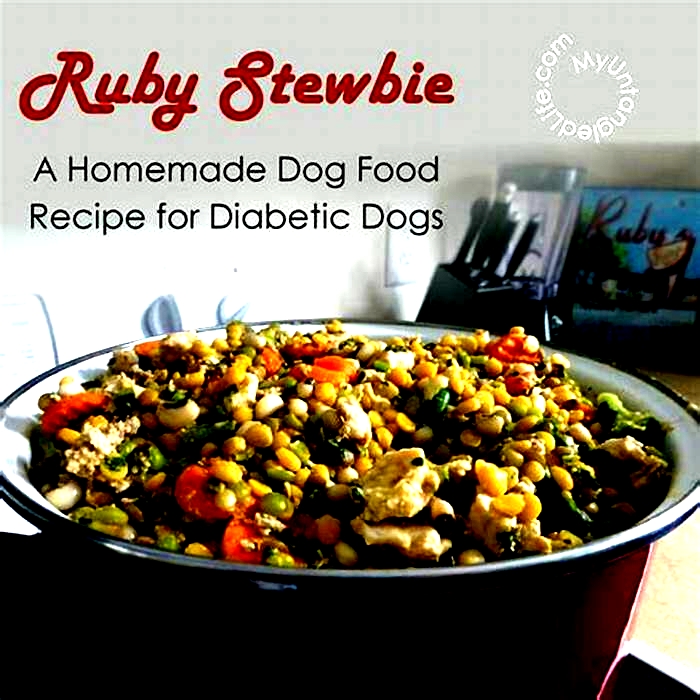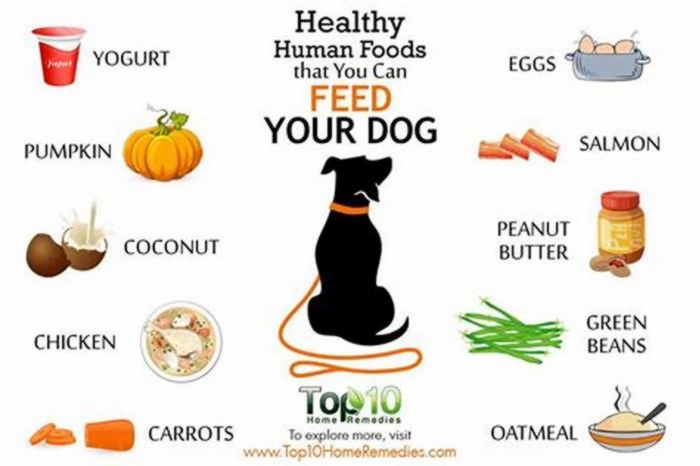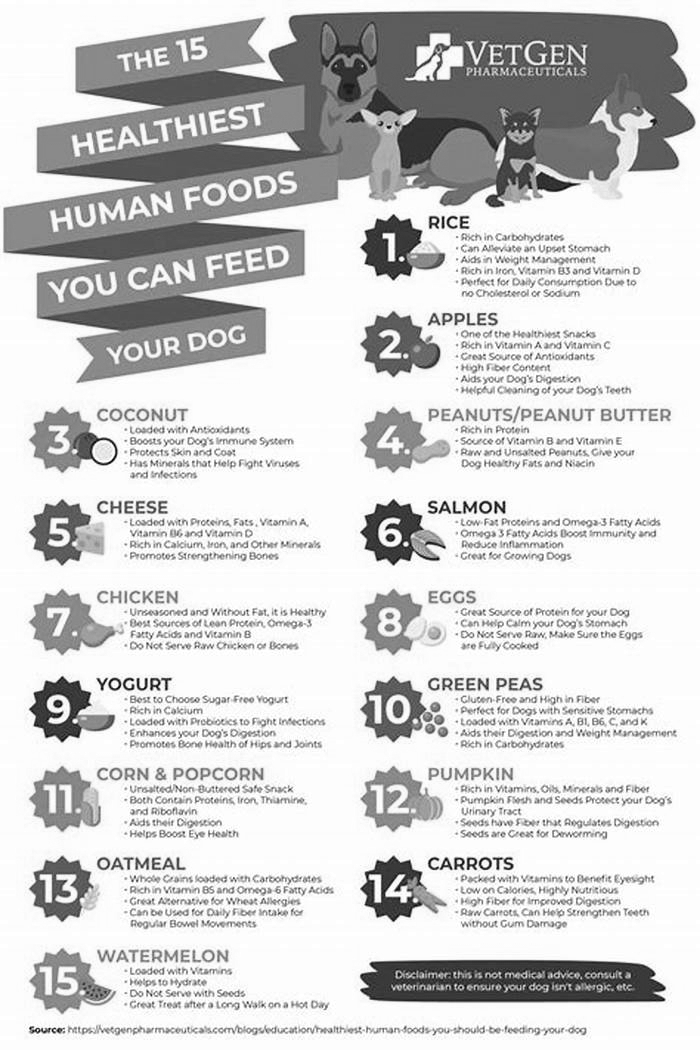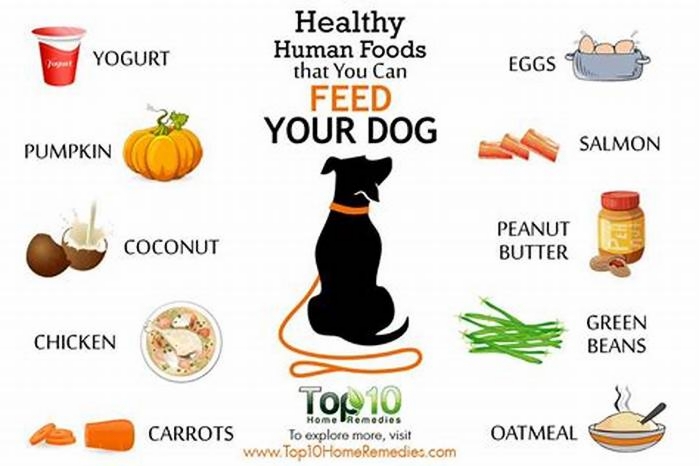best human food for diabetic dogs
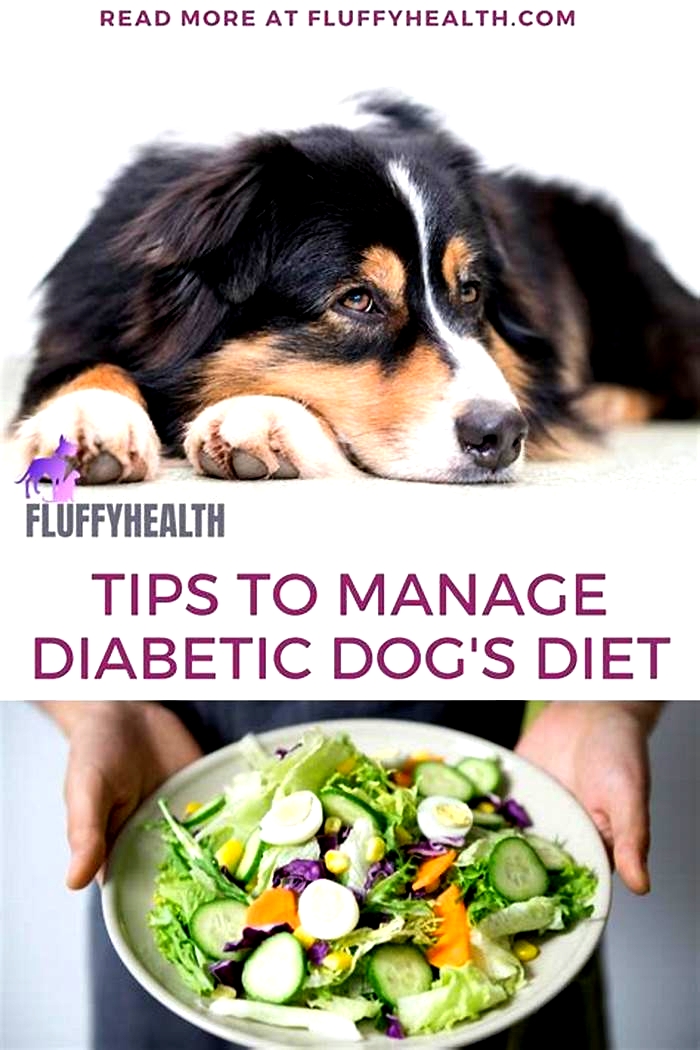
Whats the Best Diet for My Dog with Diabetes?
There is no one-diet-fits-all approach to diabetes: body condition, pet preferences, and other diseases or medical conditions will guide the best diet for a dog with diabetes. Though there are some differing approaches for optimal nutrition in dogs with diabetes, the one strategy that is most agreed upon is to keep the diet consistent use the same food, same treats, and feed and give insulin at the same time every day!
What kind of diabetes do dogs get?
You may be familiar with Type 1 and Type 2 diabetes in humans. Type 2 is much more common in people and is associated with obesity (this is also the kind of diabetes that cats usually get) and the body becoming resistant to the effects of insulin. Dogs are more commonly diagnosed with something similar to Type 1 Diabetes, or what we might call insulin-dependent diabetes mellitus (IDDM). Animals with Type 1 can no longer make insulin, often due to an auto-immune condition. Diet can play an important role in the management of both types of diabetes, but it should be used along with medical management and diet will never replace the need for insulin or other medications in diabetes for dogs or cats.
What nutrients are important for diabetic dogs?
Before selecting a diabetic diet, we need to consider which nutrients are most important for your specific dog and use this to guide the optimal nutrient profile. The main nutrients to consider for diabetic dogs include water, calories, carbohydrates, and fiber. Many dogs with diabetes have increased thirst and increased urination, so fresh, clean water should be available at all times. The ideal number of calories per cup or can of food will depend on your dogs body condition and whether she needs to gain or lose weight to obtain ideal body condition. If your dog has another disease such as heart disease or pancreatitis or has high levels of fat in his or her blood, other nutrients such as sodium or fat will also be important to consider. Some studies have shown benefits of increased dietary fiber for dogs with diabetes as well.
How does fiber help?
Fiber can be useful in canine diabetes, however, there are various types of fiber which can have different properties and benefits. The different types of fiber can be defined in a few ways, though dividing fibers into soluble (able to dissolve in water) and insoluble (bulking fibers) are good ways to categorize fiber. (For more information on the details of fiber, see our previous article here). Insoluble fibers, such as cellulose, add bulk and can slow digestion and absorption of dietary carbohydrate, which can be a benefit to sugar regulation for diabetic dogs. While the term high fiber diets can be confusing, a rough estimate to the amount of insoluble fiber in a food is the crude fiber content. Of note, the percentage of fiber on pet food labels is guaranteed analyses and thus only a maximum and cannot be compared between diets of different moisture or calorie content. In addition, the crude fiber only measures insoluble fiber so it will not include any soluble fiber in the diet. For more information on comparing fiber contents of diets, see our previous article with a built-in calculator.
What about carbs?
Though it would seem logical to reduce dietary carbohydrate in dogs with diabetes for better blood sugar control, clinical studies have shown carbohydrate content in diets is not as helpful as fiber content for dogs
A diet is more than just the food youre feeding!
Not only do we need to make sure we pick a diet with the right combination of nutrients, but we need to feed it consistently! Consistency of diet is an even more important aspect of diabetes management for most dogs than individual nutrient levels. Feeding the same food at the same times each day (and picking just one or two treats and giving them consistently at the same time!) will help the dogs body to better regulate blood sugar. Along with consistency and treats comes feeding an appropriate amount. Even the best diet, if we feed too much or too little, can make it harder to control the signs of the diabetes. Dogs with diabetes can be underweight, overweight, or even ideal weight, so focusing on achieving or maintaining ideal body weight can help you pick the right diet for your dog (along with your veterinarians guidance). Higher calorie diets will be best for underweight dogs while lower calorie diets important for overweight dogs. Some lower calorie diets are also higher in fiber. This is an example where there is no one size fits all diet for diabetes in dogs: in the instance of an underweight dog, a high fiber, low-calorie food would be harmful if that dog cannot eat enough of the food to meet his calorie needs to maintain an ideal weight!
Will weight loss help my overweight diabetic dog?
While being overweight isnt a risk factor for the development of diabetes in dogs, it can contribute to difficulty controlling diabetes once it develops. Excess body fat can cause insulin resistance, meaning that the same amount of insulin has less of an effect. All overweight diabetic pets should be encouraged to slowly lose weight once initial diabetic control is reached. It is VERY important that your veterinarian monitor your dog closely during weight loss as his diabetic control will likely change and adjustments in his insulin may be needed to avoid overdoses.
Do I need a therapeutic or vet diet?
There are diets that you can obtain from your veterinarian or with your veterinarians approval that are designed specifically for the management of diabetic dogs. However, these diets are not ideal or necessary for every diabetic dog. High insoluble fiber nutrient profiles can also be found in some over-the-counter foods. One advantage of therapeutic diets is that they may have better consistency due to more strict processing protocols compared to over-the-counter diets, which may have more batch to batch variability. It is also generally easier to obtain specific nutrient information from the manufacturer. You and your veterinarian may decide to stick with your pets regular diet initially but switch to a therapeutic diet if you are having trouble with diabetic control after starting insulin. Regardless of the diet you pick, you should always beware of substituting flavors, textures, or even dry and canned versions of the same food. Each product may have a different effect on your dogs diabetic control and you should talk with your vet before switching and monitor their diabetes carefully during and after a switch.
Anything I should avoid?
Because we want consistency in the diet, home-cooking is not recommended because of batch to batch variability as well as the lack of testing to determine how various nutrients interact with each other (e.g. fiber) and are absorbed and utilized by the dog. Veterinary therapeutic diets from companies with strong nutritional expertise are typically tested for digestibility. Also, semi-moist dog foods should be avoided because they contain sucrose, fructose, and other simple carbohydrates that can result in higher blood sugar levels, so watch for ingredient lists that include sugar, corn syrup, or honey on the label if your dog has diabetes.
Tips for managing a diabetic dog
- Make sure you keep a diet journal and tell your vet everything your dog gets, including treats, chews, table scraps, and food used for medication administration. An example diet history of what to write down can be found online at the World Small Animal Veterinary Association Nutrition Toolkit.
- When considering higher insoluble fiber diets, the increased fecal bulk will result in more frequent trips to go to the bathroom. This may mean you need to schedule more walks during the day to avoid accidents.
- Dog diets specifically designed to be higher in fiber are a better source of fiber in most cases than just adding fiber to a regular diet as they can be formulated to still provide all the right nutrients to dogs (added fiber may make it harder to absorb all the nutrients from the diet). Canned pumpkin is popular with clients as a fiber supplement, but the amount needed to see an effect may unbalance the total diet (meaning the pumpkin would provide significantly more than 10% of the dogs total calories).
Avoid fiber supplements containing added flavors or sweeteners such as xylitol, which can be harmful to dogs.

Dr. Deborah Linder, a board-certified veterinary nutritionist, is the head of the Tufts Obesity Clinic for Animals and has had articles appear in Eating Well, the Boston Globe, AARP, SHAPE, and XM Sirius Radio Doctor Channel. She has spoken at national and international conferences and a Capitol Hillbriefing, and is an expert in pet obesity, nutrition communication, and in the human-animal bond.
Want to read more information on feeding your pet?
Subscribe to always know when we add new material!
Recommended Posts
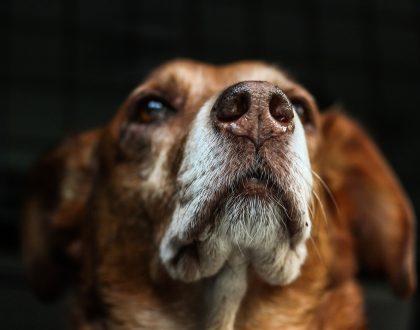
January 18, 2024

December 08, 2023
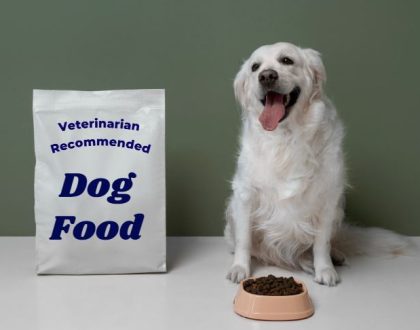
November 05, 2023
Top 5 Best Dog Foods for Diabetic Dogs (Non-Prescription)
This post may contain affiliate links. If you click and buy we may make a commission, at no additional charge to you. Please see our disclosure policy for more details.
Has your vet recently told you that your dog has diabetes? Maybe your pup was diagnosed a while ago, but you still havent found the right food. Either way, now youre searching for the best dog food for diabetic dogs.
Weve collected 5 of the top-rated non-prescription dry foods for diabetic dogs, along with plenty of resources.
At A Glance: Our Top 5 Picks for Dog Foods for Diabetic Dogs:
We want to help you provide your dog with the best life possible. While food alone wont treat diabetes, its important you have as much information about the condition as possible.
Best Dog Food for Diabetic Dogs
Here are our top picks for the best dry dog food for diabetic dogs. These are just suggestions. You should talk to your dogs vet before selecting an over the counter diabetic dog food.
| IMAGE | PRODUCT |
|---|---|
Our Top Pick Ketona Chicken Recipe Dry Food for Adult Dogs
| VIEW ON AMAZON READ REVIEWS |
ACANA Regionals Protein-Rich, Meat, Grain-Free, Adult Dry Dog Food
| VIEW ON AMAZON READ REVIEWS |
ORIJEN High-Protein, Grain-Free, Premium Quality Meat, Dry Dog Food
| VIEW ON AMAZON READ REVIEWS |
Merrick Grain-Free Dry Dog Food Recipes
| VIEW ON AMAZON READ REVIEWS |
NUTRISCA Potato-Free Dry Dog Food for All Life Stages
| VIEW ON AMAZON READ REVIEWS |


Notable Features and Characteristics:
- Less than 5% total digestible carbohydrate, less than 5% starch, and 0.5% sugars
- More than 46% protein; made with non-GMO, antibiotic-free chicken
- Made 100% in the USA using natural ingredients
Ingredients: Chicken, Pea Protein, Ground Green Peas, Oat Hulls (Source of Fiber), Chicken Fat, Flaxseed Meal, Phosphoric Acid, Gelatin, Chicken Liver Digest, Calcium Carbonate, Salt, Pea Fiber, Potassium Chloride, Choline Chloride, Vitamine E Supplement, Niacin Supplement, Thiamine Mononitrate, Calcium Pantothenate, Vitamin A Supplement, Sunflower Oil, Vegetable Oil, Citric Acid (Preservative), Ascorbic Acid, Pyridoxine Hydrochloride, Riboflavin Supplement, Vitamin D3 Supplement, Biotin, Vitamin B12 Supplement, Folic Acid Supplement, Zinc Proteinate, Iron Proteinate, Copper Proteinate, Manganese Proteinate, Iodine Proteinate, Sodium Selenite, Lecithin, Mixed Tocopherols, Rosemary Extract
Customer Reviews: Some dogs dont like the taste, but most dogs like the taste and owners report their dogs thriving on it. Dogs with diabetes, seizures, and allergies were all reported to have improved health after switching to this food.
Bottom Line: This food is on the expensive side, but you can feed less since it has fewer fillers. Most dogs thrive on this food, and the low carbohydrate level is perfect for diabetic dogs.

Notable Features and Characteristics:
- Uses meat, organs, cartilage, and bone, delivering the nutrients dogs need naturally
- Ingredients are supplied by people we know and trust, from regional farms, ranches, and waters, and delivered to our kitchen fresh or raw
- Grain-free, with no gluten, potato, or tapioca
Ingredients: Deboned beef, deboned pork, beef meal, whole red lentils, whole pinto beans, whole green peas, pork meal, beef fat, whole green lentils, whole chickpeas, whole yellow peas, deboned lamb, pollock oil, lentil fiber, natural pork flavor, beef tripe, beef liver, beef kidney, pork liver, pork kidney, beef cartilage, salt, mixed tocopherols (preservative), dried kelp, whole pumpkin, collard greens, carrots, whole apples, zinc proteinate, freeze-dried beef liver, freeze-dried pork liver, freeze-dried lamb liver, calcium pantothenate, riboflavin, vitamin A acetate, vitamin D3 supplement, chicory root, turmeric, sarsaparilla root, althea root, rose hips, juniper berries, dried lactobacillus acidophilus fermentation product, dried bifidobacterium animalis fermentation product, dried lactobacillus casei fermentation product
Customer Reviews: Many negative reviews revolve around the cost rather than the food itself. Some reviews mention dogs who dont like the taste. Otherwise, most dogs love this food and thrive on it.
Bottom Line: This food is quiteexpensive, but it contains high-quality ingredients, and you may be able tofeed less than you would of cheaper kibble.

Notable Features and Characteristics:
- 85% quality animal ingredients
- Fresh Regional Ingredients are supplied by people we know and trust and are delivered to our kitchen fresh or raw, in their most natural and nourishing form
- Using fresh and raw animal ingredients, including meat, organs, cartilage, and bone, ORIJEN is the Biologically Appropriate, grain-free diet that dogs have evolved to eat
Ingredients: Deboned chicken, deboned turkey, Atlantic ounder, cage-free eggs, whole Atlantic mackerel, chicken liver, turkey liver, chicken heart, turkey heart, whole Atlantic herring, dehydrated chicken, dehydrated turkey, dehydrated mackerel, dehydrated chicken liver, dehydrated egg, whole red lentils, whole pinto beans, whole green peas, chicken necks, chicken kidney, whole green lentils, whole navy beans, whole chickpeas, lentil fiber, chicken fat, natural chicken avor, pollock oil, ground chicken bone, chicken cartilage, turkey cartilage, mixed tocopherols (preservative), whole pumpkin, whole butternut squash, freeze-dried chicken liver, dried kelp, zinc proteinate, kale, spinach, mustard greens, collard greens, turnip greens, whole carrots, whole apples, whole pears, pumpkin seeds, sunower seeds, thiamine mononitrate, D-calcium pantothenate, copper proteinate, chicory root, turmeric, sarsaparilla root, althea root, rosehips, juniper berries, dried lactobacillus acidophilus fermentation product, dried bifidobacterium animalis fermentation product, dried lactobacillus casei fermentation product
Customer Reviews: Some dogs experience diarrhea after eating this food, and some dont like the taste. However, most dogs saw improved health and vitality after switching to this food.
Bottom Line: This is a high-quality food with a high price tag. As long as it doesnt upset your dogs stomach, it has some of the best ingredients around.

Notable Features and Characteristics:
- Industry-leading levels of omega-3, glucosamine, and chondroitin
- High in protein
- Made in the USA
Ingredients: Deboned Buffalo, Chicken Meal, Turkey Meal, Deboned Beef, Sweet Potatoes, Potatoes, Peas, Pea Protein, Potato Protein, Chicken Fat (preserved with mixed tocopherols), Whitefish Meal, Salmon Meal, Natural Flavor, Tapioca, Flaxseed, Sunflower Oil, Organic Dried Alfalfa Meal, Salt, Apples, Blueberries, Choline Chloride, Salmon Oil, Minerals (Iron Amino Acid Complex, Zinc Amino Acid Complex, Zinc Sulfate, Sodium Selenite, Manganese Amino Acid Complex, Copper Amino Acid Complex, Potassium Iodide, Cobalt Proteinate, Cobalt Carbonate), Yucca Schidigera Extract, Vitamins (Vitamin E Supplement, Vitamin B12 Supplement, Vitamin A Acetate, d-Calcium Pantothenate, Thiamine Mononitrate, Niacin, Riboflavin Supplement, Biotin, Vitamin D3 Supplement, Folic Acid, Pyridoxine Hydrochloride), Dried Lactobacillus plantarum Fermentation Product, Dried Lactobacillus casei Fermentation Product, Dried Enterococcus faecium Fermentation Product, Dried Lactobacillus acidophilus Fermentation Product
Customer Reviews: Most of the complaints are about shipping problems from Amazon, including bags of moldy food that probably werent stored properly at the warehouse. Otherwise, most dogs love this food and thrive on it, even if they previously had allergies or diarrhea.
Bottom Line: Assuming you dont get a bad bag, there is a good chanceyour dog will thrive on this food.
View Price on Amazon

Notable Features and Characteristics:
- Real chicken is the first ingredient; includes peas, chickpeas, fruits, and vegetables
- No grains, potatoes, corn, wheat, soy, artificial colors, artificial flavors or preservatives
- Contains antioxidants and omega fatty acids
Ingredients: Chicken, chicken meal, peas, chickpeas, chicken fat (preserved with mixed tocopherols), pea starch, pea protein, menhaden fish meal, natural flavors, salmon oil, dried tomato pomace, dried carrots, dried apples, dried cranberries, dried blueberries, dried apricots, minerals (zinc proteinate, iron proteinate, copper proteinate, manganese proteinate, cobalt proteinate, sodium selenite), vitamins (choline chloride, vitamin A supplement, vitamin D3 supplement, vitamin E supplement, niacin, d-calcium pantothenate, pyridoxine hydrochloride, thiamine mononitrate, riboflavin supplement, folic acid, vitamin B12 supplement), rosemary extract
Customer Reviews: While some dogs get diarrhea after eating this food, most dogs thrive on it. Dogs with food allergies or recurring yeast infections saw improved symptoms.
Bottom Line: This food is more reasonably priced than some of the others on our list, so it may be a good place for you to start.
What Is Diabetes and How Does it Affect Dogs?
Diabetes is commonly associated with people, but it can affect dogs, too. In fact, as many as1 in 100 dogs will be diagnosed with diabetes in their lifetime.
What is diabetes, anyway?
When you or your dog eat, the body breaks down the food into protein, fat, and sugar (glucose). The pancreas produces something calledinsulin, which helps process glucose.
There are two different types ofdiabetes that prevent glucose from being broken down properly.
Type I diabetes is the type that dogs are more prone to. In Type I diabetes, the pancreas doesnt produce enough insulin to break down glucose.
In Type II diabetes, the body produces so much excess insulin that the cells become immune to its effects.
With either type of diabetes, the body cant break down and use glucose properly. That can lead to a wide range of other health problems. There is no cure for diabetesit requires lifelong treatment and care.
Diabetes and Your Dogs Diet
Now that you better understand what diabetes is lets talk about how it can be affected by your dogs diet.
Carbohydrates are broken down into glucose, which isnt processed as well with diabetes. Thats why your vet may recommend a dog food diet thats low in carbohydrates.
A low glycemic diet that contains only 20-25% carbohydrates can help prevent dangerous blood sugar spikes. This type of dog food is said to have a low glycemic index.
Many vets also recommend feeding a diet thats high in fiber. Fiber helps your dog feel full longer and slows how fast glucose is released into the bloodstream.
Our recommendations for the best dog food for diabetes should not take the place of food recommendations from your vet.
Calculating the Carbohydrate Percentage in Dog Food for Diabetic Dogs
Commercial diabetic dog foods commonly list the percentage of protein and fat on the label. However, the carbohydrate percentage may not be listed. That means you have to figure it out yourself.
What you need to do is add up the other percentages (fat, protein, moisture, etc.). Subtract that number from 100 to get the carbohydrate percentage.
It may also be possible to contact the food manufacturer to find out the percentage of carbohydrates.
Diabetic Treats for Dogs
Can you still give your diabetic dog treats? The answer is yes, but you must be careful. Most biscuit-type treats, and many other common treat types, are high in carbohydrates. That means they can lead to blood sugar spikes.
The two best types of treats for diabetic dogs are vegetables and freeze-dried meat.
Most vegetables are safe for dogs (apart from onions and garlic). However, you should avoid giving your dog vegetables that are high in carbohydrates. That includes potatoes, corn, and sweet potatoes.
Single-ingredient freeze-dried meats dont contain any carbohydrates and are great treats for diabetic dogs. A few types of common freeze-dried treats you might see include:
No matter which treat type you give your dog, its still important to limit the number of treats. Too many dog treats can lead to obesity, which can worsen diabetes. Many dogs with diabetes should be on reduced-calorie diets, and you need to factor treats into that.
Things to Consider When Picking Diabetic Dog Food
There are a whole lot of factors you need to consider when picking the best diet for your diabetic canine. Here are some of the things you need to consider when choosing a diabetic dog food.
Made in a Country with High Safety and Quality Standards
Not every country has the same high safety and quality standards. With any dog food, its important to find one made in:
- USA
- Canada
- New Zealand
- Australia
- Germany
- England
- France
This is especially important for diabetic dogs since they have such specific needs and health issues.
Food from China, in particular, seems especially prone to recalls and may pose hazards to your diabetic dog.
Avoid Unidentified Meat Meals or Byproducts
You should avoid byproducts of any kind in your dogs food. What are byproducts? Theyre the pieces of animals that humans dont want to eat, like hooves, beaks, and horns. There is little nutritional value in these ingredients, so its best to avoid them.
Meat meals include ground-up bones, tendons, and ligaments. These ingredients still have some nutritional value. However, the food should tell you exactly what animal the meat meal comes from.
For example, avoid products listing meat meal or poultry meal in favor of one that lists chicken meal or turkey meal.
Even though its often more expensive, whole meat ingredients (like deboned chicken) usually provide the best nutrition.
Look for High-Fiber Ingredients
Fiber has two important functions that arecrucial for diabetic dogs.
First, fiber expands in your dogs gut, which helps them feel fuller longer. Secondly, it slows down how quickly glucose is released into your dogs blood. This helps prevent sugar spikes.
Ingredients that arehigh in fiber include:
- Pumpkin
- Sweet potato
- Oats
- Leafy greens
Low in Carbohydrates
When carbohydrates are digested, they turn into glucose. Your diabetic dog doesnt produce enough insulin to break down glucose. That means that the lower the level of carbohydrates in your dogs food, the better.
However, there are two different types ofcarbohydrates.
Complex carbohydrates take longer to digest and contain important nutrients. Ingredients that contain complex carbohydrates include peas, sweet potatoes, and brown rice.
Simple carbohydrates break down quickly and contain a lot of sugar. This excess sugar leads to blood sugar spikes. Simple carbohydrates include filler ingredients like soy and corn.
Focus on Portion Control
More than half of all pet dogs in the United States are overweight. Obesity causes many of the same health problems in dogs as it does in people. Diabetes may worsen or complicate these health conditions.
You should be able to feel (but not see) your dogs ribs. If your dog is already overweight, you need to talk to your vet about how to help them lose weight. If your diabetic dog is not already overweight, you want to focus on portion control to maintain a healthy weight.
Dont forget to factor in treats when calculating how much to feed your dog. Many people give their dog an appropriate amount of food but add too many additional calories with treats.
Avoid Artificial Additives
Artificial colors, flavors, or preservatives may be used tomake cheap food taste better. However, these ingredients are unnecessary and may cause food allergies. Look for high-quality foods that dont rely on artificial additives to entice your dog to eat them.
Find Food with all the Nutrition Your Dog Needs
Most commercial dry dog foods contain the most basic nutrition your dog needs. However, you probably dont want to give your diabetic dog a recipe with the barest minimum of nutrition.
Look for labels that contain at least some of the following:
- Antioxidant-rich ingredients for immune health
- Glucosamine and chondroitin for joint health
- Probiotics for digestive health
You should also look for foods that use natural ingredients to provide vitamins and minerals. Some dog food companies just spray a vitamin mixture on the kibble instead of using healthy ingredients that provide vitamins naturally.
Look for Food with a Low Glycemic Index and Low Fat
Diabetic dogs need food with a low glycemic index. Whats that? The glycemic index refers to how quickly food is converted into glucose. The higher the number, the faster this happens.
Since diabetic dogs have trouble processing glucose, you want a food that converts carbohydrates to glucose slowly. Look for foods with a low glycemic index.
There are two different reasons you should avoid high-fat levels in your diabetic dogs food.
First, fat contains higher levels of glucose than protein. As weve already discussed, you dont want your diabetic canine to deal with too much glucose.
Secondly, high-fat levels provide your dog with calories that dont help them feel full. Nobody wants to see their dog acting like theyre starving to death. Excess levels of fat in the diet can also cause obesity.
Symptoms of Diabetes in Dogs
Not sure if your dog has diabetes? Here are some common symptoms:
- Increased thirst and urination
- Unexpected weight loss
- Change in appetite
- Fruity breath
- Fatigue
- Urinary tract infections
- Cataracts
- Depression
- Chronic yeast or skin infections
Dogs tend tohide their symptoms, so if you notice any symptoms, you shouldcontact your vet right away.
Treating Diabetes in Dogs
You treat diabetes in dogs similar to how you treat it in humans. Typically, you need to do regular blood sugar testing and give insulin injections. Thats in addition to closely regulating your dogs diet to prevent blood sugar spikes.
Your vet may also suggest that you give your diabetic dog plenty of exercise to keep them healthy.
Complications of Diabetes in Dogs
Diabetes in dogs can cause lots of complications, especially if its untreated. Some serious complications of diabetes include:
- Cataracts, which can cause blindness
- Urinary tract infections caused by excess sugar in the urine
- Diabetic retinopathy is another condition that can cause blindness
- Insulin overdose. Giving your dog too much insulin can cause their blood sugar to drop dangerously low. That can lead to seizures, brain damage, or even death.
These are only a few of the potentially serious complications diabetes in dogs can cause. Thats why its so important to carefully manage your pets diabetes. That includes giving them an appropriate diabetic dog food.
Dog Breeds Prone to Diabetes
While any pet can develop diabetes, some dog breeds are more prone to it than others. Dog breeds that are more prone to diabetes include:
- Beagle
- Bichon Frise
- Cocker Spaniel
- Dachshund
- Doberman Pinscher
- Fox Terrier
- German Shepherd
- Golden Retriever
- Keeshond
- Labrador Retriever
- Pomeranian
- Poodle
- Puli
- Samoyed
- Schnauzer
In general, female dogs (especially if they are overweight and/or intact) are more likely than males (especially skinny ones) to develop diabetes.
The Costs Involved with Diabetes in Dogs
While diabetes is treatable, it is a lifelong disease, and the costs involved in treating it can add up. Here are some of the costs involved in treating the condition:
- Insulin injections are usually given twice a day and may cost $30-$150 per month
- Syringesare required for the injections and cost around $10-$20 a month
- A glucose monitor helps you track your dogs blood sugar levels. You should only need to buy one, at a cost of around $20-$150
- Lancets and test strips are disposable items used with the glucose monitor to check your dogs blood sugar. Plan on around $5-$20 per month.
- Diabetic dog food may cost around 10-20% more than regular dog food
- Vet visits will probably increase in frequency so the vet can monitor your dogs condition. Costs vary by vet clinic but may cost hundreds of dollars per year.
Are there Homemade Dog Foods for Diabetic Dogs?
Its understandable if youd rather cook for your diabetic dog than feed them commercial dog food. However, creating a nutritionally complete homemade diabetic dog food is tricky even for healthy dogs. Nailing a complete nutritional profile for a diabetic dog is incredibly difficult.
If you really prefer to cook for your dog, talk to your vet about recipes that will provide your dog with all the nutrition they need.
More Care Tips for Diabetic Canines
We wanted to provide you with a few more care tips for diabetic dogs.
First, you should feed your dog on a regular, consistent schedule. Take your vets suggestion, but it will usually be twice a day before you give their insulin injections. Try to feed your dog at the same time every day to reduce blood sugar fluctuation.
Secondly, try to avoid changing your dogs diet. Once youve found the right diabetic dog food, try not to change it. Switching foods can cause unusual fluctuations in your dogs blood sugar levels.
Third, dont forget to factor treats into your dogs diet. Avoid treats that arehigh in carbohydrates. Dont forget to factor treat calories into your dogs daily diet to prevent obesity.
Dog Blood Glucose Testing
One of the trickiest parts of having a diabetic dog may be regular blood glucose testing. Monitoring your dogs blood glucose levels is a crucial part of maintaining the health of your diabetic dog. While the process is relatively simple, your dog may not make it easy.
Unless your vet says otherwise, youll need to get a sample of blood from your dogs ear flap for testing.
When your dog is calm, warm up their ear flap to encourage blood flow. Then, use a lancet to make a small cut in a clean, hairless portion of your dogs ear. Collect the blood with a glucose test strip and insert it into the monitor. Apply pressure to your dogs ear with a cotton ball to stop the bleeding.
Your dogs blood sugar level should be between 100250 mg/dL depending on their size. You may need to adjust how much insulin you give your dog based on their blood sugar levels.
Best Dog Food for Diabetes FAQ
We know this is a long article, so weve compiled answers to the most frequently asked questions.
How Often Should I Feed my Diabetic Dog?
Unless your vet tells you otherwise, you shouldfeed your diabetic dog twice a day. Do your best to feed your dog at the same time every day. That will help reduce blood sugar fluctuations.
What is Diabetic Dog Food?
Diabetic dog food may be a prescription food, one formulated specifically for dogs with diabetes, or a premium dog food that meets certain requirements.
Diabetic dog food should be high in protein and fiber and low in carbohydrates and fat.
Is there a Connection between Dry Dog Food and Diabetes?
No studies have proven a link between dry dog food and diabetes. However, it is thought thatthe high carbohydrate levels in some dog foods contribute to the development of diabetes. Anecdotally, dogs that eat an ancestral diet consisting primarily of meat are less likely to develop diabetes.
Without scientific studies, its up to you to do your research to determine what food is best for your dog. You should also discuss your dogs diet with their vet.
Why is my Diabetic Canine Losing Weight?
Diabetic dogs dont produce enough insulin to convert glucose into a usable source of energy. That means your dog must get energy from fat and muscle. That leads to weight loss.
If your diabetic dog is losing weight (and you havent changed their diet or exercise), you shouldcontact your vet. Your dogs diabetes may not be well-controlled.
On the other hand, if your dog is overweight, your vet may recommend that they lose some weight. Intentional weight loss is not a concern like unintentional weight loss.
Why Wont My Diabetic Dog Drink or Eat?
There are many reasons your diabetic dog might stop eating or drinking.
The simplest possibility is just that your dog doesnt like the flavor of food youre feeding them. Try adding broth (no salt added) to their kibble to see if they eat it.
Dogs also stop eating when they dont feel good. There are a lot of illnesses that could cause a dog to stop eating. Two are specific to diabetic dogs:
- Ketoacidosis is the result of your dogs body not having enough insulin to convert glucose into energy. Your dogs body will start breaking down fat instead, which releases ketones. That leads to reduced appetite.
- Gastroparesis is the delayed emptying of your dogs stomach. It can be caused by neurological damage caused by diabetes. Your dog will feel full because their stomach contents arent moving into their intestines.
If your diabetic dog stops eating or drinking for more than a day, you shouldcontact your vet immediately. They could be suffering from something serious and potentially dangerous.
Wrapping Up the Best Non-Prescription Food for Diabetic Dogs
Weve done our best to provide you with all the information you need about diabetes in dogs and the best food for diabetic dogs. However, you shouldstill talk to your vet to make sure you know how to care for your diabetic dog.
Hopefully, you can find a great choice for your dog from our list of the best dry dog food for canine diabetes.
[wpdatatable id=67]
Jennifer Nelson is a passionate dog lover and pet care professional based in Denver, Colorado. With over 12 years of experience as a pet groomer, Jennifer has a wealth of knowledge and expertise when it comes to the health and well-being of dogs.
She is an accomplished pet care professional and writer who truly embodies the spirit of a dog lover. Her passion, expertise, and commitment to the dog community make her a valuable resource for anyone looking to learn more about the care and wellbeing of these wonderful animals.
Jennifers writing style is warm, engaging, and informative, and her articles are always well-researched and backed by her extensive professional experience. Her goal is to provide readers with valuable insights and advice on all aspects of dog care, from feeding and grooming to exercise and health.

